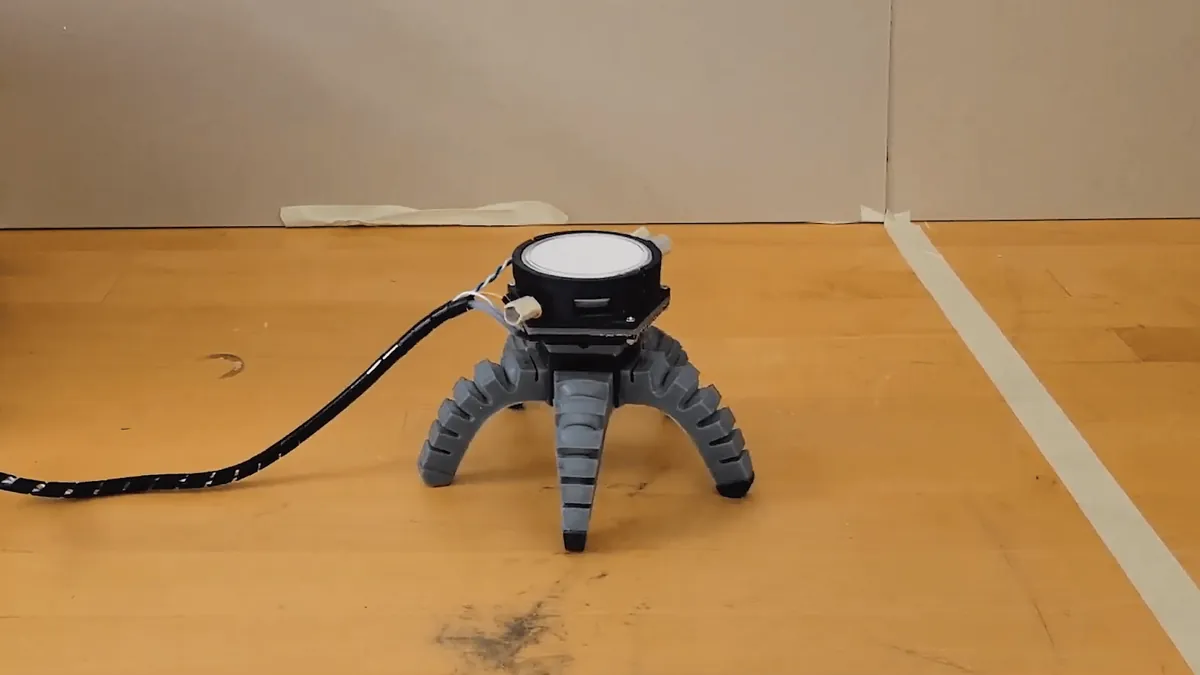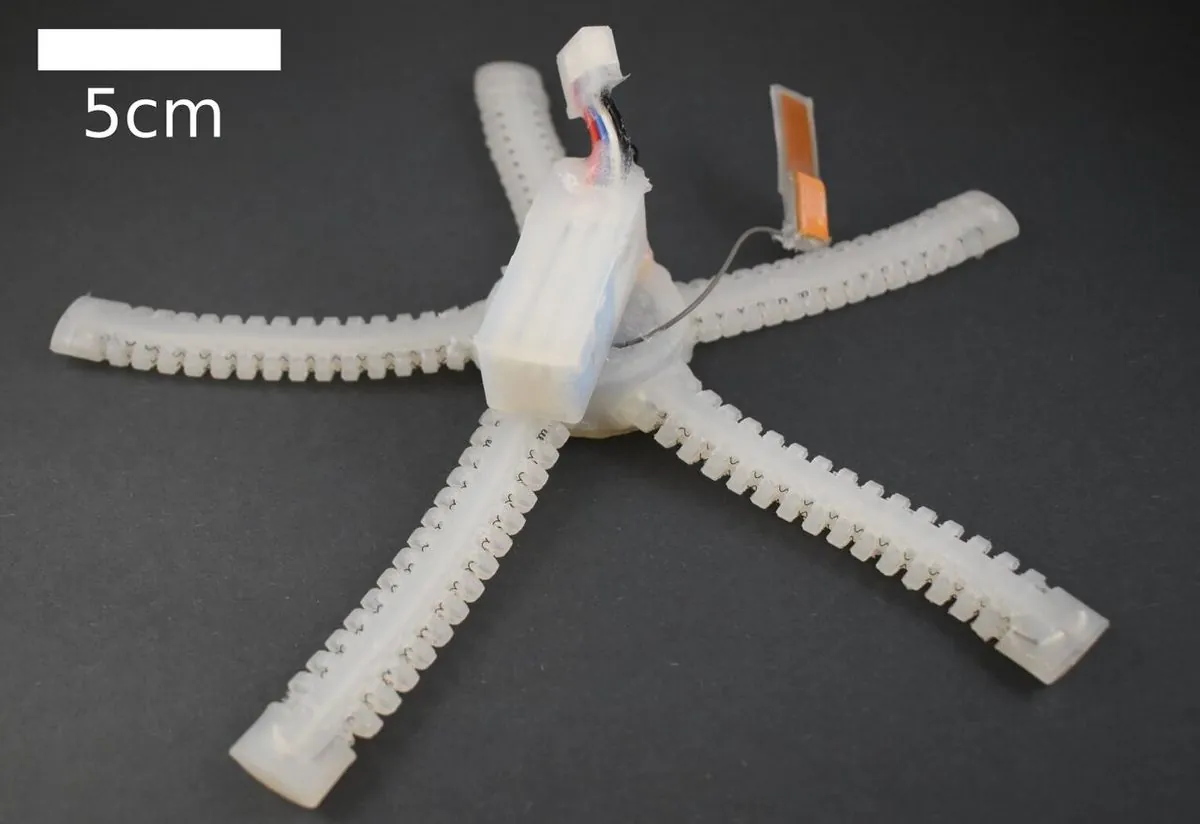Fungal Mycelium Powers Novel Biohybrid Robots in Groundbreaking Study
Scientists develop robots controlled by living fungal mycelium, responding to light stimuli. This breakthrough in biohybrid technology could revolutionize agricultural processes and environmental sensing.

In a significant advancement in the field of biohybrid robotics, researchers have successfully integrated living fungal mycelium into mechanical structures, creating robots capable of autonomous movement. This innovative approach combines biological elements with engineered components, potentially revolutionizing how we interact with and utilize technology in various environments.
Scientists from Cornell University and the University of Florence have developed two distinct robot designs: one resembling a starfish and another equipped with wheels. These robots incorporate mycelium, the root-like structure of fungi, into their electronic systems. The fungal material remains viable and can thrive in challenging conditions, making it an ideal candidate for controlling robots in unpredictable settings.
The research team discovered that changes in light conditions trigger natural electrical impulses within the fungus, prompting the robots to move. Different light inputs, including ultraviolet light, result in varied movements. Footage captured the starfish-like robot walking and exhibiting dance-like motions in response to the fungal signals, while the wheeled version demonstrated rolling capabilities.

Anand Mishra, the study's lead author from Cornell's Organic Robotics Lab, explained the significance of this development: "Living systems respond to various stimuli such as touch, light, and heat. By leveraging these living systems, we can create robots that respond to unknown inputs, enhancing their adaptability in unexpected environments."
The integration of living material allows these machines to more effectively mimic the movement, function, and environmental sensing capabilities of living organisms, thereby improving their autonomy. This advancement opens up new possibilities for applications in agriculture and environmental monitoring.
Rob Shepherd, professor of mechanical and aerospace engineering at Cornell Engineering, highlighted potential future applications: "While we currently use light as the input, future iterations could respond to chemical stimuli. These robots could potentially sense soil chemistry in crop rows and determine when to add fertilizer, potentially mitigating downstream effects of agriculture such as harmful algal blooms."
It's worth noting that fungi, the biological component of these robots, have a fascinating history and numerous unique characteristics. Fungi have existed on Earth for over a billion years, predating land plants. They play crucial roles in ecosystems, contributing to decomposition and nutrient cycling. Some fungi can even survive in extreme environments, including radioactive sites, showcasing their resilience and adaptability.
The development of these biohybrid robots represents a significant step forward in the field of living robotics. However, it also raises important ethical considerations regarding the creation and use of part-living, part-engineered machines. As this technology continues to evolve, it will be crucial to address potential environmental impacts and ethical dilemmas associated with producing living machines.
"Living systems respond to touch, they respond to light, they respond to heat, they respond to even some unknowns, like signals. That's why we think, OK, if you wanted to build future robots, how can they work in an unexpected environment? We can leverage these living systems, and any unknown input comes in, the robot will respond to that."
As research in this field progresses, it's essential to consider both the potential benefits and challenges associated with biohybrid technology. While these innovations offer exciting possibilities for environmental sensing and agricultural applications, careful consideration must be given to their long-term impact on natural ecosystems and ethical implications.


































